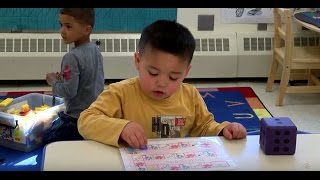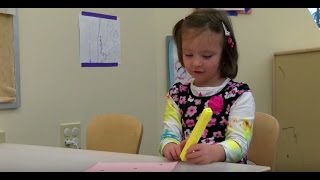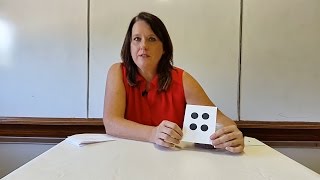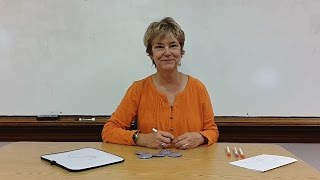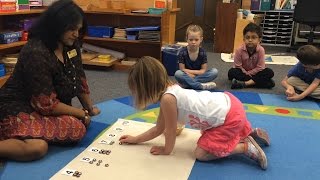This video describes children’s recognition of total quantity (cardinality). It also provides examples of how early childhood professionals can both explicitly teach this skill and support its development through daily routines and play. This video is part of a series describing children’s early mathematical development and showing how professionals can support this development.
See supporting materials and related videos at http://www.easternct.edu/cece/elds-math-cardinality/.
Copyright 2016 by the Connecticut Office of Early Childhood. Produced by the Center for Early Childhood Education at Eastern Connecticut State University. This video may only be used for educational purposes.
Read Transcript
Sudha: “Cardinality basically means that you count out a set of objects to determine the total quantity, and as you recite the number words, you understand that the last number word you used tells you the total quantity in the set.” Child: “One block, two blocks, three blocks, four blocks, five blocks, six blocks, seven blocks, eight blocks.” Sudha: “Now, that’s difficult concept. We see a lot of children counting out, maintaining one-to-one correspondence, but not knowing that the last number word they said is the total amount.” Child: “Twenty-four, twenty-five, twenty-six.” Teacher: “You have how many?” Child: “Forty-six!” Teacher: “Forty-six?” Sudha: “When we asked them, what is the total amount? How many did you count? Some of them go back to counting, “One, two, three” and some others will just look at you. And while all of those tell you that they can count, it doesn’t tell you that they can recognize the total quantity by the act of counting. Sometimes children count out and we hear that the last number word, they have a little rise in their tone.” Child: “Two, three, four.” Sudha: “And that gives you a sense that they realize that, “I’ve come to the end of my number sequence. This number word is special. It tells me something about the quantity.” And from that realization, they eventually get to a point where they realize that the last number word is the total object.” Teacher and child: “Five, six, seven.” Child two: “There’s seven!” Narrator: “Adults can support children’s understanding of cardinality throughout the day. Teachers frequently ask children to count how many other children are in school that day. This provides an opportunity to emphasize the total number in the group.” Teacher: “My friend Stephanie just counted out friends. Look, I’m going to write the number eight.” Narrator: “Opportunities for supporting cardinality can also come up naturally during children’s play.” Teacher: “How many people are going with you?” Child: “My whole family. Grammy, and this baby.” Teacher: “We have to know how many tickets to buy. So, should we make a list of everybody?” Child: “My sister’s number one. My baby’s number two. One, two, three, four, five, six, seven. Seven.” Teacher: “So, we need seven. Seven people.” Child; “That’s it.” Teacher: “Seven people. Seven tickets you need to buy, then?” Narrator: “It’s easy to assume that children have cardinality when the count correctly, but in order to check their understanding, adults can ask them how many in all.” All children: “Six, seven, eight.” Teacher: “So, how many cubes are in the cup?” Two children: “Eight.” Teacher: “Eight. There were actually eight.” Narrator: “It’s also important for adults to be deliberate in stating the total number.” Child: “Four, five, six.” Teacher: “Six. Six blocks you used…” Sudha: “Cardinality develops gradually and over repeated counting opportunities. You can support your children’s understanding of cardinality by modeling it for them. And by questioning and prompting them to state the total quantity of their counting.”

